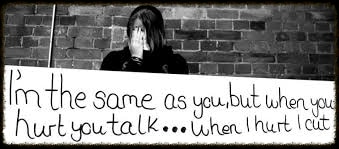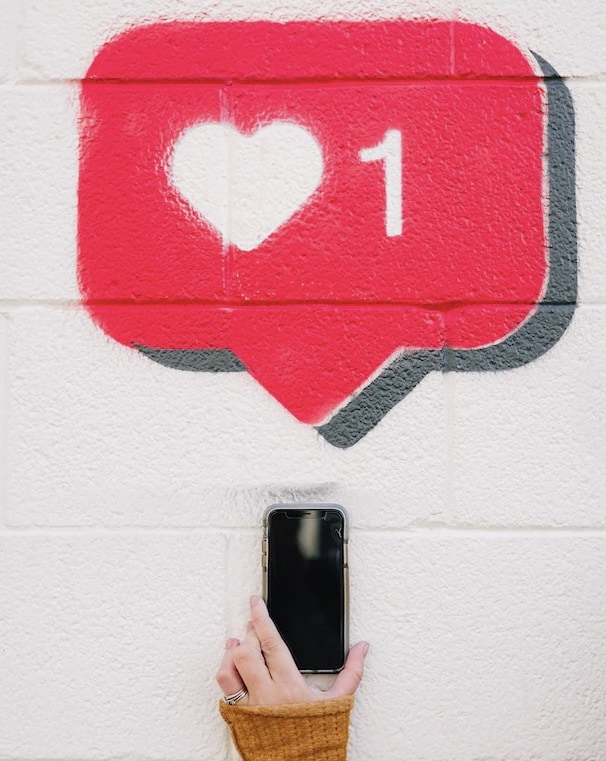
Self-harm: ‘When I hurt, I cut…’ by Annabel Murray

Self-harm is generally thought of to include violent acts to the self – specifically deliberately cutting, hitting, burning, injecting or imbibing potentially dangerous objects or substances, hair pulling, eating disorders etc. Smoking and drinking, over or under-exercising, engaging in risky sporting/driving/sexual behaviour, cosmetic surgery, tattooing and piercing may also be added to the list – although some may not consider many of behaviours in the second list to be harmful. Is eating a doughnut after a difficult meeting at work an act of self-harm or of self-care?
Self-harm is on the increase, and many wonder at the “contagious” aspect of the behavior – is it a way of crying out for help or attention; an act to externally express inner rage; a form of self-punishment; or just a way of “belonging” to a particular group?
Whilst working with a self-harming client can be very distressing, Lynn Martin references many examples of clients who, she feels, were kept alive by their self-harm(4). She refers to “anti-suicide” element of the behaviour, and explains that, for some, self-harm actually allows them to feel that they are in control of their lives. The endorphins, which are released into the blood stream after a puncture to the skin, can serve to somehow “re-boot” the depressed, withdrawn client who has lost touch with her world. Similarly, the pain of the wound can highlight that it hurts “here” rather than just “inside”.
As therapists, it is important that we do not allow any personal shock to spill out when working with a self-harming client. Showing concern for the wounds, and making sure that they are kept clean; ensuring, too, that the client is secure in the fact that you see them behind their pain; communicating that it is alright to talk about the self-harm; respecting the fact that the client is, more often than not, trying to survive and not to die; and reassuring the client that you will not try to steal from them their coping mechanism until they themselves feel safe enough to live without it – all these sort of responses are seen as being the most helpful to the truly distressed and pained client.
Whatever the reasons or the resolutions for the self-harming individual, as therapists we need to be aware of the width and prevalence of this behavior. We need, too, to look after ourselves whilst working with self-harming clients by exploring, in supervision, the myriad of reactions that this particularly violent representation of pain can produce in us.
By: Annabel Murray, Counsellor, June 2015
1 Samaritans & Centre for Suicide, 2002
2 Talking Taboos, 2012
3 NICE 2002
(4) Lynn Martin, Therapy Today, July 2013
Self-help Information about self-harm
What leads a person to self-harm?
Self-harming behaviours, such as cutting, scratching and hitting oneself, are often a physical way to deal with very painful psychological experiences and feelings of distress and isolation. Self harm can arise for all sorts of reasons such as grief, abuse, trauma, fear, loss and other feelings that are overwhelming. These may be from early childhood or in the present, or they may follow an incident that makes a person angry, frustrated or disappointed.
There is usually mounting tension followed by a compulsion or an impulsive need to self-harm. Some people dissociate (separate themselves so that they are not fully aware of their behaviour) from their mental and physical pain during the act of self-harm. Because others may see acts of self-harm as “deliberate”, unsympathetic responses can be a consequence. However, quite often a person is not very conscious of their reasons for self-harming and does not feel in control when they do it.
There are various forms of self harm, including cutting with a razor or knife, burning, hitting or banging your head, or over-dosing when it’s not life-threatening. It is often done in secret.
Self-harm has hidden short-term benefits for the person harming. These can include:
- Release of emotions – getting them “out” can bring relief and decrease in tension
- Making the mental pain feel real (akin to crying without tears, when the person can’t externalise their feelings)
- Giving a distraction from, or a sense of pause, from the mental pain
- Providing a way of telling others how bad you feel
- Punishing the self for self-hatred and guilt
How does therapy help?
- learning to manage feelings and difficulties in healthier ways, such as talking
- exploring and understanding the circumstances in which the self-harm arises
- understanding the unconscious conflicts and buried emotions underneath the acts of self harm
- developing a capacity to contain, tolerate and think about distress
By: Wendy Bramham, July 2013
Remember:
Seek immediate help for any serious injury or overdose – with your GP, ambulance or A&E.
“Friends can play a large part in preventing further harm… I would get the parents to talk to their child’s friends to see if they have noticed anything.. make it subtle though!”
Girls aged 17 told us:
“What might have helped would be if I was not made to feel it was my fault or that I was a drama queen. Guilt is a key contributor to my issues and I was made to feel guilty for self-harming. I wanted my parents to understand that I wasn’t doing it because I hated them. I knew they would be heartbroken if I died, but when you’re mentally ‘effed up’ you don’t see it that way, and the selfishness that depression produces isn’t controllable. Self-harm isn’t always slitting your wrists. It can be pinching yourself under the table all lesson, or forcing your mind through horrible thoughts (emotional self-harm is a huge thing). Yes, we know we shouldn’t do it, we know it is bad for us, we know it’s selfish. Telling us this just makes us feel guilty, which makes us feel crapper which makes us more likely to lose control and do it again. When you get a cold or even cancer you don’t blame yourself or anyone else; you just look for a way to fix it. Sometimes we self-harm because it is the only way to feel alive. Yet, blaming the child for feeling so low is not healthy and will not make them forthcoming with reasons why.” MA




This Post Has 0 Comments